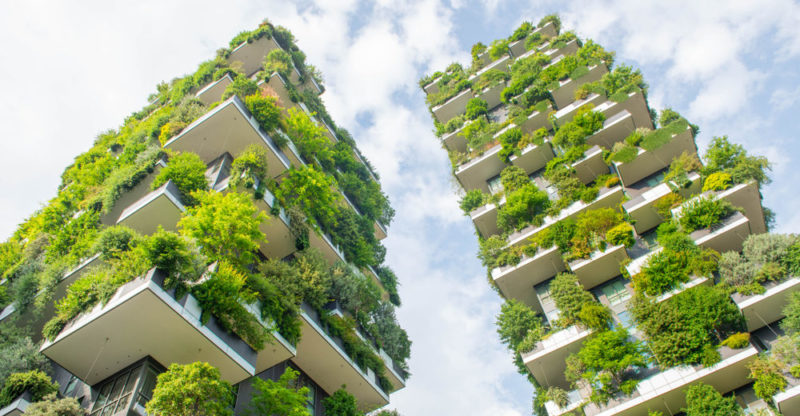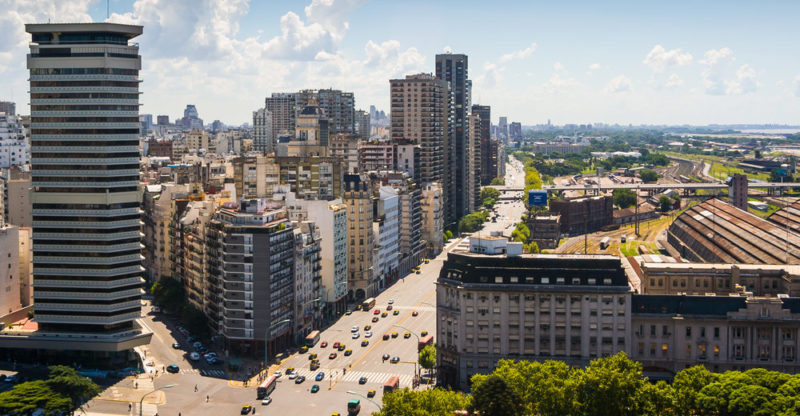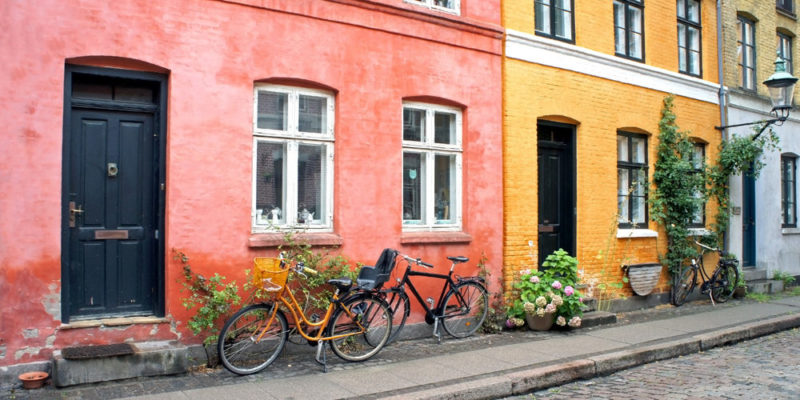We explain what a sustainable city is and how this model works. Also, what are its general characteristics and examples.
What is a sustainable city?
A sustainable city or sustainable city (sometimes self-sustaining city) is a model of an urban center that makes a rational use of the natural and technological resources that its population requires.
These cities guarantee an environment of adequate habitability without compromising the stability of future generations of inhabitants . In general, these are cities capable of balancing their environmental, social and economic needs.
The idea of sustainable cities comes from the doctrine of sustainable development , which is the aspiration to a development methodology for human society that does not pollute or destroy the planet . In this way, it is prevented from becoming uninhabitable for future generations in exchange for immediate riches.
This is a need that arose at the end of the twentieth century , when the long-term environmental impact of human industrial activities began to become apparent . An example of this impact is climate change due to the massive emission of greenhouse gases .
Thus arises the idea of thinking about self-sustaining cities, that is, city models that reduce their environmental burden and care about their durability over time .
Sustainable development

Sustainable development is a necessity for post-industrial humanity , which is beginning to understand its traditional development model as unfeasible.
It consists of the indiscriminate exploitation of natural resources and continuous damage to the world ecosystem .
The depletion of raw materials , ecological imbalance and climatic changes are warning signs.
This situation will worsen if there is no change in the emission levels of greenhouse gases ( CO 2 , CH 4 , etc.) mainly due to the burning of fossil fuels.
This means that a new model of industrial activity , mass transportation and above all the generation of electrical energy is necessary , and that constitutes a real challenge for contemporary humanity.
Sustainable city model
There is no ideal of a sustainable city , nor a single model to which they must adhere. On the contrary, sustainable cities are those that achieve their own model, their own path towards self-regulation and sustainable development. They take into account the own and sometimes unique conditioning factors of its geography , its population and its history .
How does a sustainable city work?

A sustainable city is governed in principle by the following guidelines:
- Equal rights . The citizens of a sustainable city enjoy equal rights in fundamental matters such as access to health and education , the enjoyment of a healthy habitat that does not threaten health, and a dignified coexistence without overcrowding, misery , or violence.
- Ecological transit. The movement of citizens in the city must take place in the best possible way, while minimizing the burning of polluting fuels and, eventually, the cost of electricity. This requires investment in new materials and the search for urban models that allow the use of bicycles, that minimize the need for their own cars and that are effective in their massive mechanisms (subway, buses, trains, etc.).
- Rational use of resources. This not only points to fuels, but to the disposal of sewage , indiscriminate logging, unstoppable urban sprawl and the flooding of rivers, etc. Cities cannot grow forever without preserving green spaces and maintaining a certain balance with rural spaces .
- The three R's. A sustainable city must educate its population to reduce polluting materials and avoid energy waste; for the reuse of materials that do not require to be bought again; and for the recycling of waste materials that should not be mixed with liquid and biodegradable waste. In this sense, it is necessary to form a global citizenship.
Keys to achieving sustainability

Some keys to achieving a sustainable city have been discussed, such as:
- Preserve the public. Squares, parks and spaces for walks and exchanges are vital in the global city, to avoid the burden of concrete hells. Not only because they usually involve plant lungs that improve air quality , but also because they promote the encounter between neighbors and promote sport .
- Urbanize compactly. Simply stated, cities cannot grow forever, and some may have grown larger than is convenient. The global model of the city should aim at compactness, that is, at density, so that cities do not require as much investment in transport.
- Take back the center. The city of the future must recover a certain identity and keep its center alive, historically preserved, to offer citizens its own cultural dynamics, forging an identity and avoiding the anonymity of large cities.
- Ensure air quality. Vegetable lungs and openings for air flow are key to sustainable urban life. In this way, the concentration of smog that can have negative consequences on health is avoided .
- Integrate nature. A city should not be a system contrary to the nature of the planet, but integrated into it. The idea is not to devastate nature to urbanize, but to live with it, respecting nearby green areas: forests , coasts, wild areas , etc.
- Clean energy. The key to the future is, everyone says, in a new way of obtaining energy , which does not pollute as much as fossil fuels. There are already huge investments in wind, hydroelectric, solar or geothermal energy , each with its flats and needs.
Waste disposal
One of the great problems of cities is the enormous amount of garbage they generate . And even worse if you do not separate between recyclable and biodegradable elements.
Any city that boasts of being eco-friendly must implement measures (in many cases unpopular) to reduce waste , as well as important measures of sanitation and reuse of sewage.
Overpopulation

Another major drawback of today's cities has to do with the global growth of humanity, which now exceeds 7 billion individuals .
Half of the population lives in large urban centers , especially in the West . It is estimated that by 2050 this figure will comprise two thirds of humanity.
Sustainability certification
In the communities that meet certain ordinances to that effect they are given a certificate of sustainability. It can be awarded by the central government or international committees . It is a testament to their efforts to preserve urban life for the future.
Sustainable cities and the third world

One of the great challenges of urban sustainability is constituted by the cities of the « third world» . Its late development implies the inability to meet important environmental regulations and measures.
This is because they are not a priority in the face of much more immediate situations : urban misery, high crime rates, incompetent democracy , violence, socioeconomic crisis, etc.
The UN and sustainable cities
One of the great promoters of sustainable development in cities is the UN, and especially its Development Program. Among its goals is the transformation of the global urban environment.
Its objective is to promote a gradual change towards more egalitarian societies , with greater protection for the weak and that actively undertake to reduce their negative environmental impact.
Examples of sustainable cities

The most eco-friendly cities in the world are currently:
- Copenhagen, Denmark.
- San Francisco, USA.
- Reykjavik, Iceland .
- Toronto Canada.
- Melbourne, Australia.
Passionate about understanding and contributing to a world that does not stop changing. New forms of Work, Sustainability and Technology. For many years he has worked as a creative for large international companies. He has a Ph.D. in information technology and he has been doing quantitative research in the interdisciplinary areas of information systems, cyber security, data analytics and artificial intelligence. He continue to look for creative solutions through technology to help companies to be more humane and sustainable..
Leave a reply
Your email address will not be published. Required fields are marked *Recent post

Sport: What Is It, Types, Risks, Features, Characteristics and Examples

Dogs: Emergence, Features, Characteristics, Feeding and Breeds

Story: Definition, Elements, Structure, Features and Characteristics

